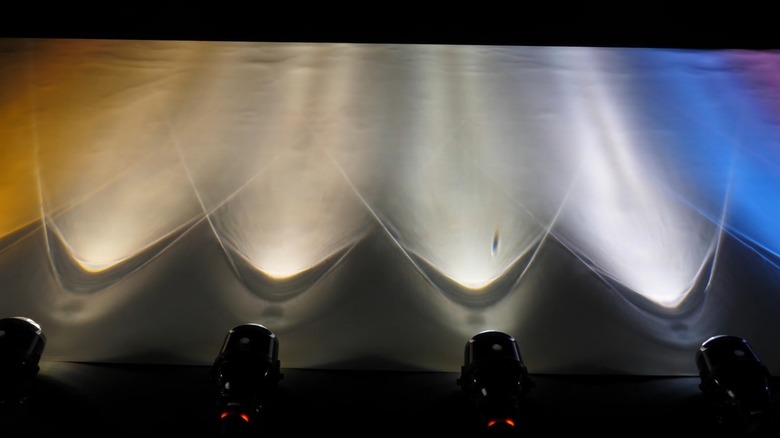HID Vs. LED Headlights: Differences In Brightness And Lifespan
The early 20th century had the first automobiles fitted with kerosene oil lamps for night travel, which used an open flame and couldn't provide any visibility ahead. Luckily, automotive technology continued to evolve over the decades, and there are now high-tech options that utilize inert gas, photons, and even lasers.
HID (High-Intensity Discharge) headlights, also known as xenon headlights, first debuted in the U.S. in the 1996 Lincoln Mark VIII, and they were far from being a cheap add-on. HID works by making an electric arc between two points that travels through xenon gas inside the bulb.
Almost two decades later, Audi equipped their R8 with the first pair of all-LED headlights (LED low beams were used in some models previously). LED (Light Emitting Diode) technology uses electricity to energize semiconductors, which then release photons, which are the tiniest light particles possible.
Both of these headlight technologies are as effective as they are expensive and are among the reasons why modern headlights are so bright. In terms of measured brightness and functioning life, HID headlights put out 3,200 lumens and will last upwards of 3,500 hours. The LED design is even brighter, outputting up to 5,000 lumens and will last around 10,000 hours.
Lumens and Kelvin explained
Lumen, which is Latin for light, is the term for the measure of the brightness of artificial light, with higher numbers of Lumens indicating a brighter source. This figure is calculated using candela (light intensity) and steradian (a measuring unit for three-dimensional fields from a fixed point).
Earlier headlight configurations like halogen produce up to 2,100 Lumens but can also get as hot as 1300 degrees Fahrenheit. LEDs can heat up to temperatures of 212 degrees Fahrenheit, which is significantly less than halogen. But one of the remarkable characteristics of HID bulbs is that they don't generate any heat while activated, even though they produce over 3,000 Lumens.
The light your eyes perceive is but a tiny fraction of the electromagnetic spectrum, which is made up of different wavelengths, from X-rays to microwaves. The color of light is measured in temperatures or Kelvins. Headlights that feature a more yellow shade are lower in temperature, such as halogen bulbs, which can be less than 5000K in color temperature. If headlights were made with a 10000K color temperature, for example, they would appear blue but wouldn't emit much light. HID and LED headlights are typically right in the middle, around 6000K, as this is the most effective in terms of visibility.
HID vs. LED: which one is better?
In terms of seeing the road ahead, the brighter white LED headlights most effectively pierce the darkness. This is because LED configurations produce light in the most powerful (to our eyes) part of the color temperature scale, near the middle. The same light temperature is present in midday sunlight, which offers superior visibility. Another advantage of LEDs is that they activate much quicker than other options going from dark to maximum in just a millisecond.
While in some cases, HID bulbs can be less expensive than LEDs, LEDs can also last substantially longer. However, modern headlights in general (but particularly LEDs) have been troubling other motorists, some of whom believe them to be too bright. According to Lightaware.org, LEDs are so luminous that the human eye can't adjust quickly enough to them after being adapted to the darker evening environment, potentially causing visibility issues.
Fortunately, Matrix headlights are innovating the space once again with an ability to shift direct light away from blinding other drivers. No matter which type of headlight your vehicle uses, one of the best safety tips for driving at night is ensuring they're in good condition.


